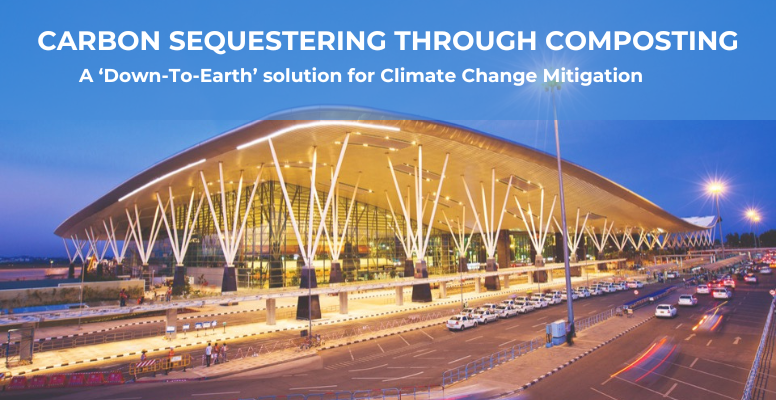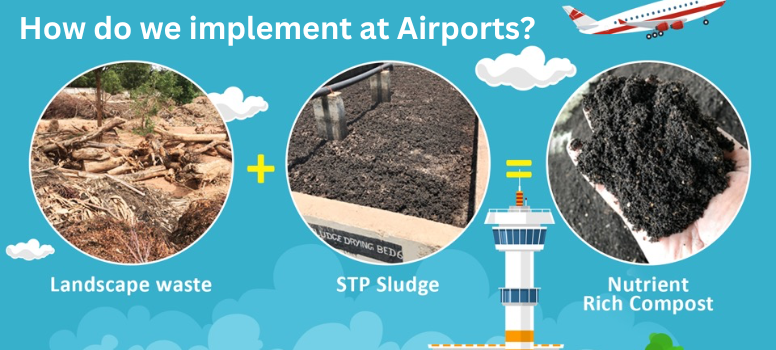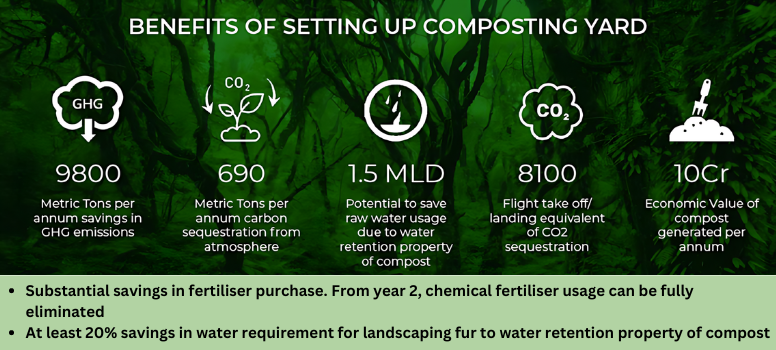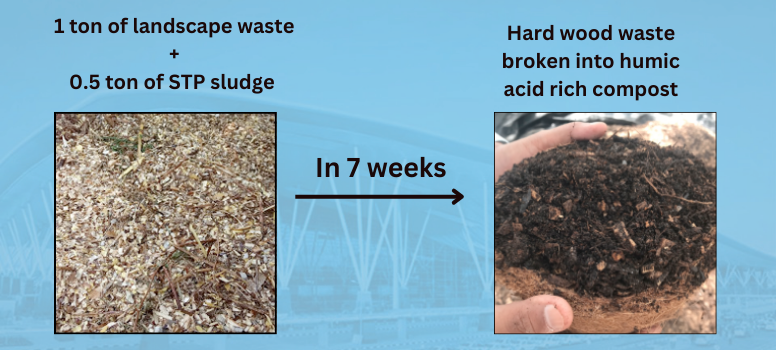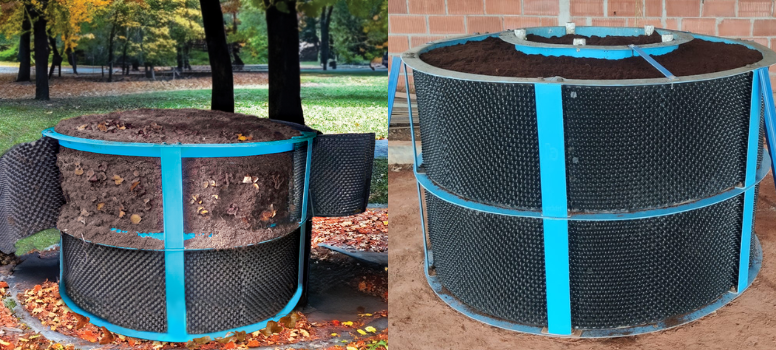Airports strive to create a warm and inviting atmosphere by incorporating nature into their spaces, resembling a forest-like environment that enhances the travel experience. Travellers often feel inspired to capture the vibrant green surroundings, adding to their overall enjoyment.
However, have you ever considered the substantial amount of green waste generated in this process? Some airports produce up to 10 tonnes of green waste daily, posing a significant challenge in managing and treating such large quantities of organic waste safely.
Typically, this green waste includes leaf trimmings, dried leaves, twigs, branches, and logs. The primary challenge lies in effectively managing and treating such substantial volumes of landscape waste, as landfill disposal can be environmentally hazardous. During hot weather conditions, there is a risk of wood catching fire, which can be highly dangerous.
At Orbin™, drawing from years of experience in composting, we have developed a straightforward and effective solution for treating any amount of green waste and transforming it into nutrient-rich compost. Through trials conducted at an international airport, we have successfully composted green waste alongside STP sludge, demonstrating our innovative approach to sustainable waste management.
How to implement green waste composting for all airports?
Green waste treatment at airports involves mixing shredded landscape waste with STP sludge and a microbial consortium. The shredded landscape waste is Carbon rich and STP sludge is nitrogen rich. With the microbial consortium added it maintains the right C:N ratio, increases beneficial microbes and accelerates the decomposition process. This mixture will be placed in Orbin SILO composting containers located in the designated area for green waste management. These containers provide 360-degree aeration, including force aeration and leachate control, ensuring an odour-free, fly-free, and rodent-proof composting process.
The entire setup will operate in a controlled environment with continuous aeration facilitated by biofloc blowers. This ensures optimal conditions for composting throughout the process. Additionally, the flexibility of the products and equipment offered by Orbin™ allows for the entire setup to be relocated to a new location if needed, demonstrating adaptability and efficiency in waste management solutions.The units will be covered with rainproof shelters to prevent attracting birds, thereby enhancing airport safety measures. The resulting compost can then be used to nurture airport plants, promoting a lush green environment without the need to purchase compost externally.
The advantages of composting green waste at the source, based on the treatment of 5 tons per day, include significant reductions in GHG emissions, water usage, enhanced carbon sequestration, and the economic value of the compost generated. Here’s a summary of these benefits:
- Reduction in GHG Emissions: Composting green waste at the source minimizes greenhouse gas emissions that would otherwise result from landfilling organic materials.
- Water Usage Savings: The nutrient-rich compost produced helps retain soil moisture, reducing the need for frequent watering.
- Carbon Sequestration: The composting process enhances the soil’s ability to sequester carbon, contributing to climate change mitigation.
- Economic Value: The resulting compost is a valuable product that can be used to enrich soils, reducing the need for chemical fertilisers and lowering overall landscaping costs.
